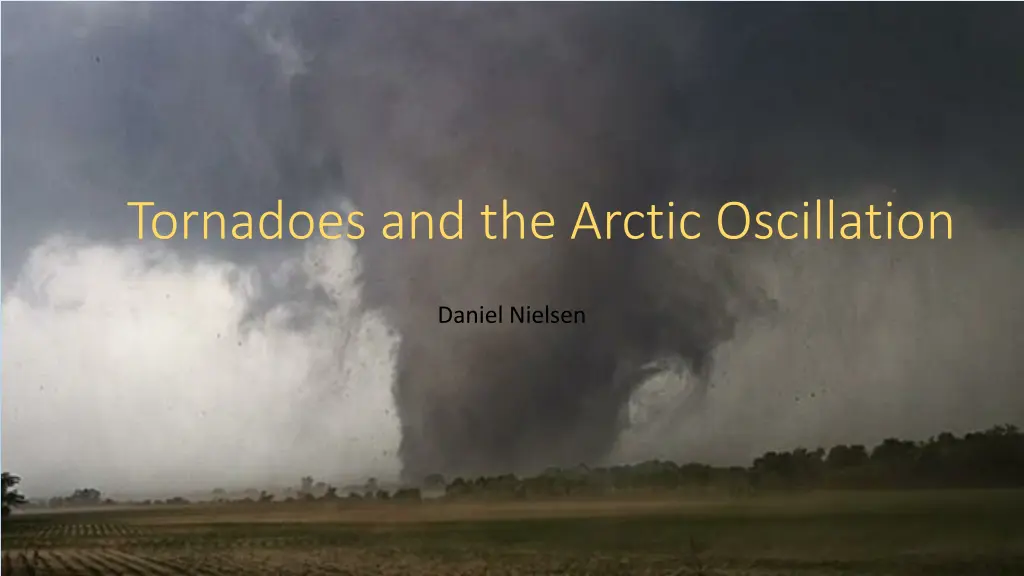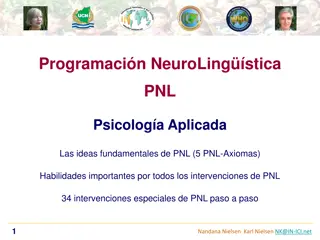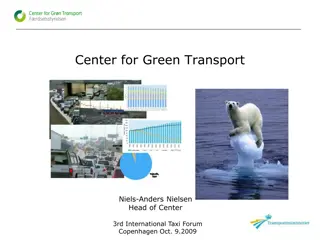
Tornadoes and Arctic Oscillation Insights
Explore the relationship between tornado occurrences and the Arctic Oscillation from 1950-2007. Learn about methodologies used, data analysis, and trends in tornado counts. See visual representations and findings in this detailed research.
Download Presentation

Please find below an Image/Link to download the presentation.
The content on the website is provided AS IS for your information and personal use only. It may not be sold, licensed, or shared on other websites without obtaining consent from the author. If you encounter any issues during the download, it is possible that the publisher has removed the file from their server.
You are allowed to download the files provided on this website for personal or commercial use, subject to the condition that they are used lawfully. All files are the property of their respective owners.
The content on the website is provided AS IS for your information and personal use only. It may not be sold, licensed, or shared on other websites without obtaining consent from the author.
E N D
Presentation Transcript
Tornadoes and the Arctic Oscillation Daniel Nielsen
Motivation/Goals Existence of year-to-year variability in tornado count Bias toward recent years due to increased storm spotting capabilities Improvements in radar network and deployment of NEXRAD Increasing population and improved communications Goals: Determine whether there is a relationship between the Arctic Oscillation (AO) and tornado count Explore tornado trends from 1950-2007
Data Tornado data obtained from the Storm Prediction Center (SPC) severe weather archive Includes each confirmed tornado, as well as its location, magnitude on Fujita/Enhanced Fujita Scale, date of occurrence, etc. Monthly AO index data obtained from Climate Prediction Center s archive Includes AO index for each month from 1950-present
Methodology Cross-spectral analysis was performed on AO and tornado data Only the months of March and April were used (for simplicity) Periodogram, cross power spectral density (CPSD), coherence Linear regression analysis was performed on tornado data All confirmed tornadoes from 1950-2007 were considered Correlation coefficient
What is the Arctic Oscillation? Photos from http://en.wikipedia.org/wiki/File:Arctic_Oscillation.png
Tornadoes and Arctic Oscillation March April R2 =0.3556 R2 =-0.1926
Periodograms for Strong Tornadoes and AO Data March March April April
Cross-Spectrum Power Density (Welchs Method) March April
Coherence March April
Tornado Trends As mentioned before, increased spotting capabilities have led to more confirmed tornadoes in recent years
Trends in F/EF3+ Tornadoes Might this decrease be specific to a certain region? Is Tornado Alley shifting?
A Changing Tornado Alley R2=-0.2429 R2=-0.4535 Old Alley: OK, TX, KS, NE, SD New Alley: AL, MS, LA, AR, MO, IL Average slope from bootstrap method = -0.2793 Confidence Interval: [-0.2843 -0.2743]
Conclusions Relationship between tornadoes and Arctic Oscillation is not clear Increasing trend in tornadoes over time Likely due to bias associated with increased spotting capability Overall decreasing trend in strong (EF3 or greater) tornadoes Most pronounced in Tornado Alley states (OK, KS, TX, NE, SD) Weaker decreasing trend in New Alley (AL, MS, LA, AR, MO, IL) Future work might focus on potential correlation between global warming and tornadoes





















